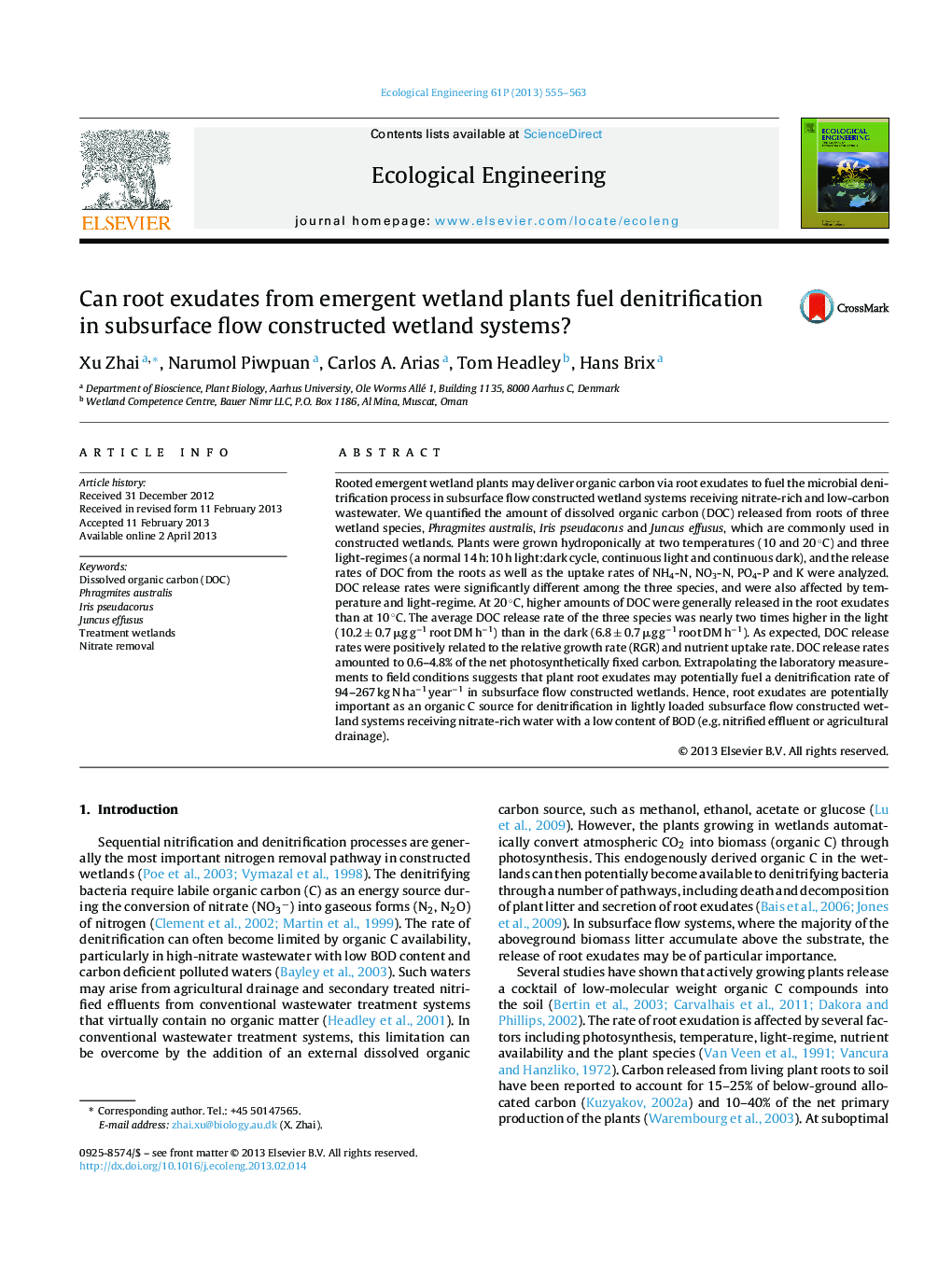| کد مقاله | کد نشریه | سال انتشار | مقاله انگلیسی | نسخه تمام متن |
|---|---|---|---|---|
| 4389523 | 1305130 | 2013 | 9 صفحه PDF | دانلود رایگان |

• Wetland plants release labile organic carbon compounds from their roots.
• Root exudation rates depend on species, temperature and light-regime.
• Average root exudation rates vary between 4.3 and 12.2 μg g−1 root DM h−1.
• Root exudates might fuel a denitrification rate of 94.0–267.4 kg N ha−1 year−1 in subsurface flow constructed wetland systems.
Rooted emergent wetland plants may deliver organic carbon via root exudates to fuel the microbial denitrification process in subsurface flow constructed wetland systems receiving nitrate-rich and low-carbon wastewater. We quantified the amount of dissolved organic carbon (DOC) released from roots of three wetland species, Phragmites australis, Iris pseudacorus and Juncus effusus, which are commonly used in constructed wetlands. Plants were grown hydroponically at two temperatures (10 and 20 °C) and three light-regimes (a normal 14 h:10 h light:dark cycle, continuous light and continuous dark), and the release rates of DOC from the roots as well as the uptake rates of NH4-N, NO3-N, PO4-P and K were analyzed. DOC release rates were significantly different among the three species, and were also affected by temperature and light-regime. At 20 °C, higher amounts of DOC were generally released in the root exudates than at 10 °C. The average DOC release rate of the three species was nearly two times higher in the light (10.2 ± 0.7 μg g−1 root DM h−1) than in the dark (6.8 ± 0.7 μg g−1 root DM h−1). As expected, DOC release rates were positively related to the relative growth rate (RGR) and nutrient uptake rate. DOC release rates amounted to 0.6–4.8% of the net photosynthetically fixed carbon. Extrapolating the laboratory measurements to field conditions suggests that plant root exudates may potentially fuel a denitrification rate of 94–267 kg N ha−1 year−1 in subsurface flow constructed wetlands. Hence, root exudates are potentially important as an organic C source for denitrification in lightly loaded subsurface flow constructed wetland systems receiving nitrate-rich water with a low content of BOD (e.g. nitrified effluent or agricultural drainage).
Journal: Ecological Engineering - Volume 61, Part B, December 2013, Pages 555–563